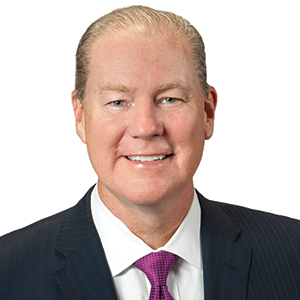It is halftime for 2022, the time when successful teams adjust their gameplan to ensure an impressive performance and victory in the second half. This can create wonderful opportunities for those who are prepared.
Let’s review the first half of 2022: higher interest rates brought on by hyperinflation, less buying of debt by the Federal Reserve, reducing capital availability, and geopolitical risk marked most significantly by the war in Ukraine. The 10-year Treasury started the year at 1.63 percent and is now approximately 3 percent, and the Fed has raised benchmark rates while signaling additional increases. This volatility has decreased market liquidity, confidence and transaction volume.
The debt capital markets, which include securitized loans, such as Collateralized Loan Obligations and Commercial Mortgage-Backed Securities have become volatile. These markets, which fueled so much of the mergers and acquisitions growth and real estate acquisition markets during this economic expansion, have seen bond demand drop and spreads increase, raising borrowing costs and causing acquisition multiples to drop for buyers and sellers. Fannie Mae and Freddie Mac are also well behind annual lending goals.
Leading into 2022, the market had experienced robust growth, emerging from the uncertainty of the pandemic. The volatility in the first half of 2022 could lead one to stay on the sidelines, but these first half clues provide insights to attack the second half, ensuring that teams have the right strategy and the right people in the right positions to emerge successful.
Adjusting the gameplan can also create opportunities so, what might be those be in the second half of 2022? The securitized debt markets that offered borrowers much higher leverage at lower costs in the past 18 months had been boxing out traditional lenders, like banks, and in the national apartment acquisition markets, Fannie Mae and Freddie Mac. The softening of debt markets in the first half of 2022 has created an open field for banks, insurance companies and Fannie Mae/Freddie Mac, assuming continued dislocated debt capital markets in the second half of this year.
Banks are well capitalized and could fill much of the capital void in the second half. While bank debt tends to provide slightly lower leverage and include more covenants, the cost of that capital should be lower, enabling market participants to finance new acquisitions. In the second half (and always), make sure those bank relationships are as strong as ever. Investors seeking higher returns to offset inflation may find acceptable private investment opportunities in transactions financed by bank debt.
Fannie Mae and Freddie Mac have always hit their lending goals, have positioned themselves to be more competitive and are poised for a strong second half. Companies that are overleveraged might be looking for new partners. In real estate, overleveraged assets with maturing debt that cannot be refinanced at higher interest rates may need to sell at discounted prices.
Now is also an opportune time to give stretch assignments to teammates to grow through experience in what is likely to be a challenging second half. The entire team can participate in dissecting the first half performance. Tapping their intellect and creativity can drive a more robust strategy and excitement for finishing 2022 strong.
They can also identify weaknesses in your strategy. Clear communication with the team and those rooting for your team, primarily investors, will also be critical to success. Good luck in the second half! ●
Daniel Walsh is founder and CEO of Citymark Capital


